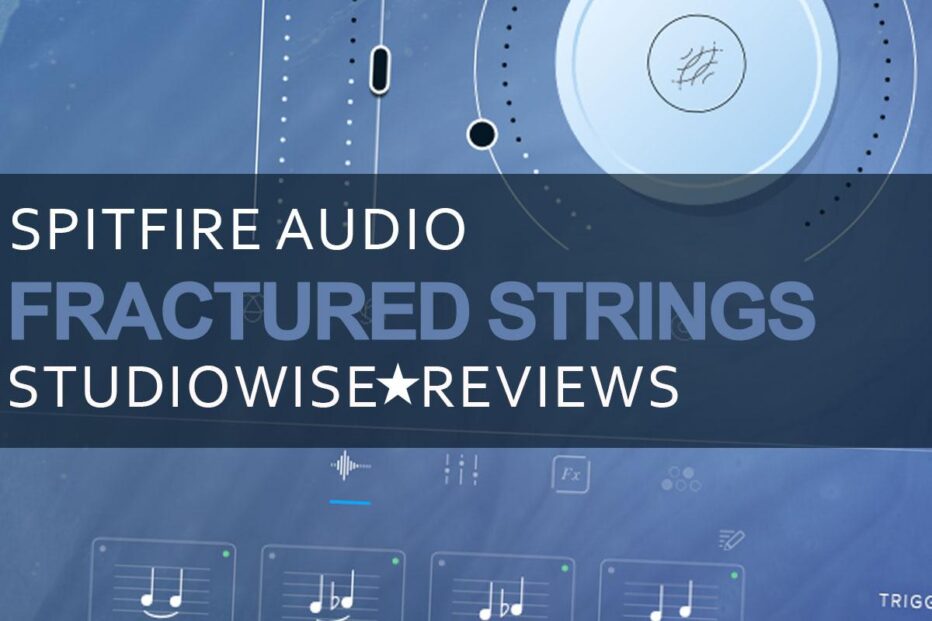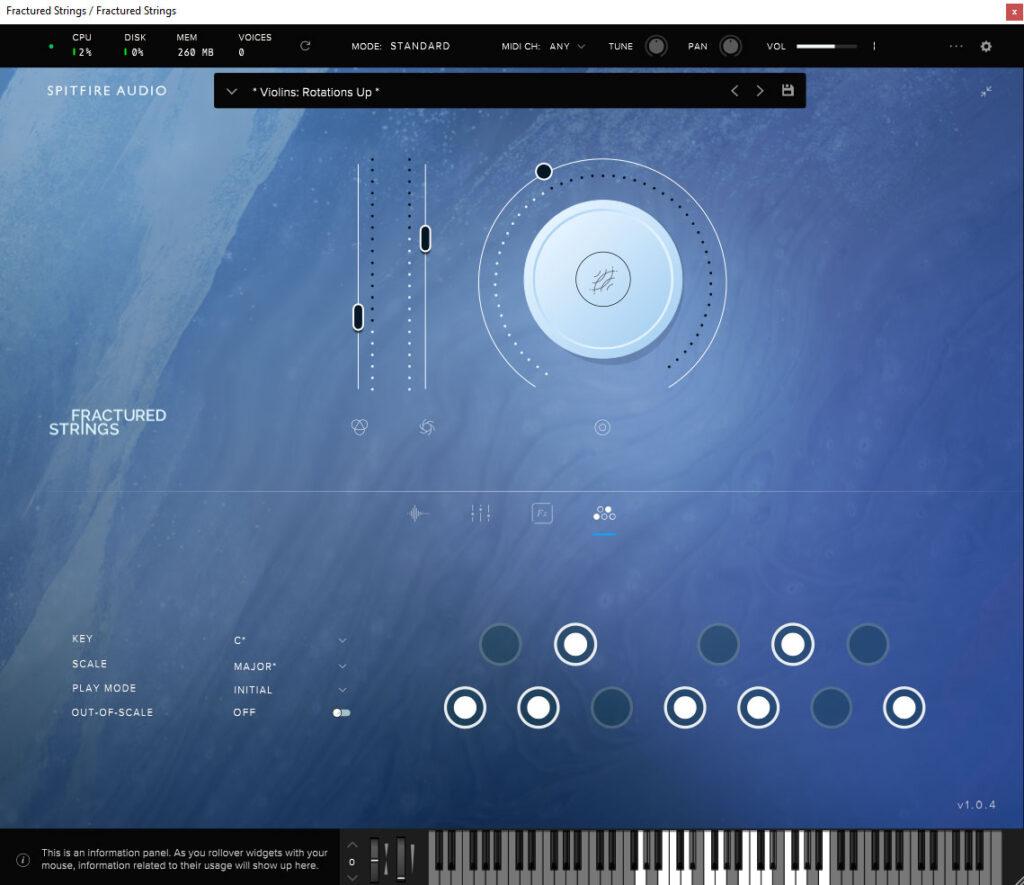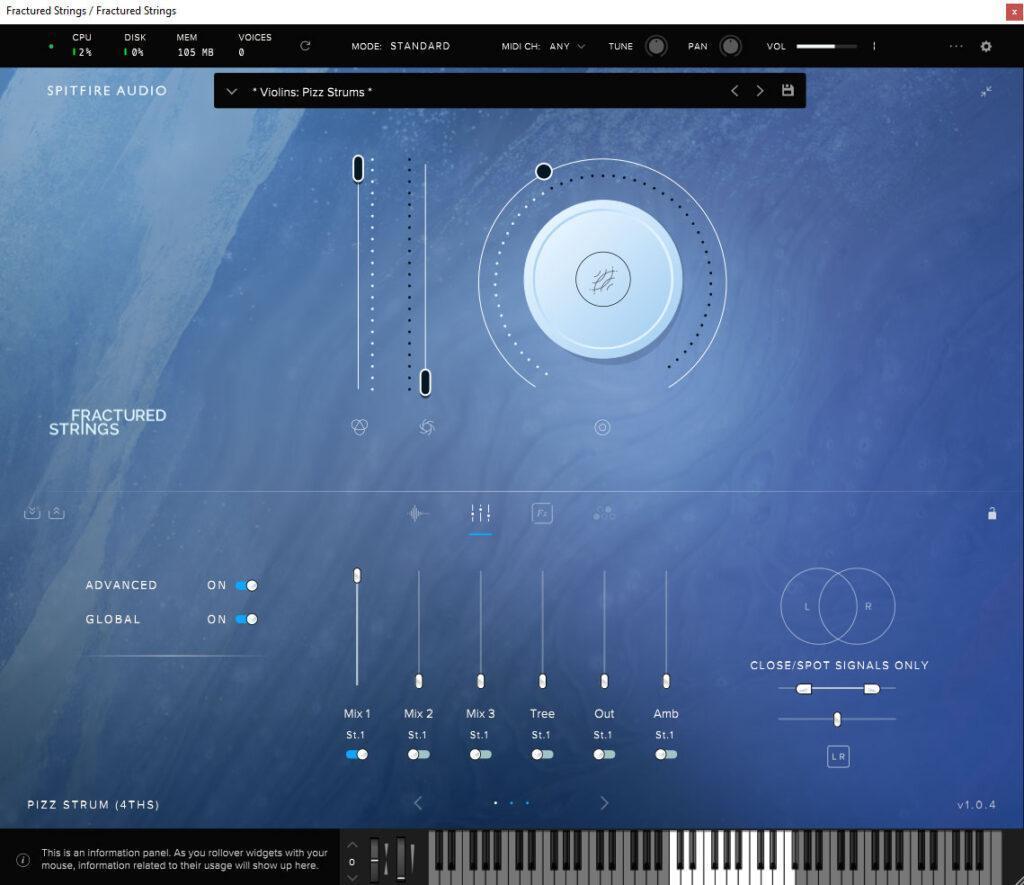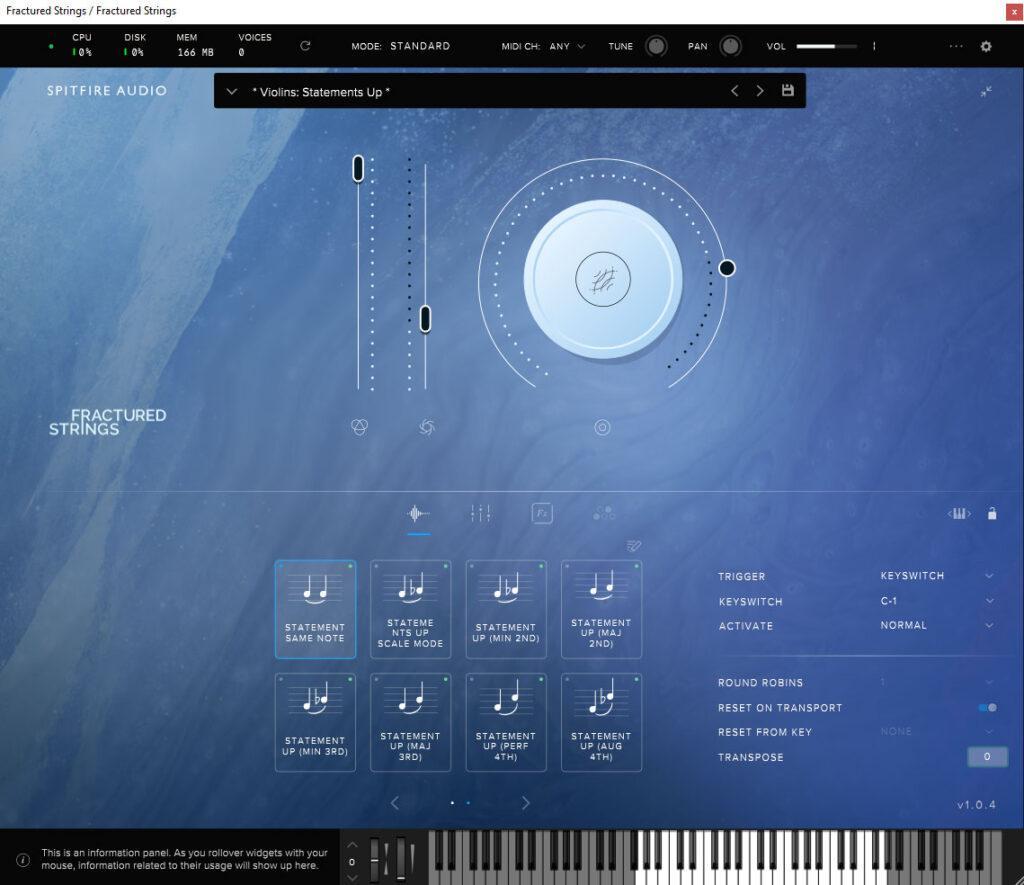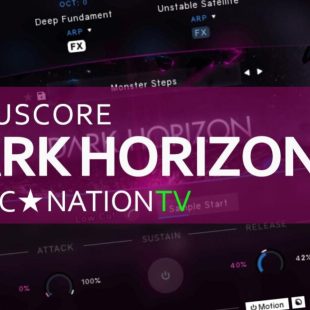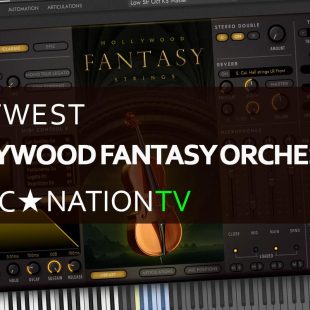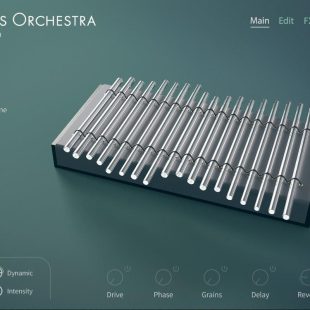Spitfire Audio Fracture Strings
Hi and welcome to Music Nation, glad you made it. This week we have a rather interesting string library from Spitfire Audio that yet again seems to have on offer a niche instrument library we didn’t know we needed. Fractured Strings looks to play a supportive role for your current core orchestral libraries, and possibly a genius move from Spitfire to provide more flexibility to your already purchased titles.
On paper Fractured Strings seems rather limited, a phrase library contains only violin and cello with no standard articulations. It’s best to give Spitfire Audio the benefit of the doubt and trust there is more under the hood than what first appears, so let’s crack on and see what this is all about.
Overview
Spitfire Audio Fracture Strings is a violin and cello phrase sample library using the company’s proprietary non-Kontakt platform, an EVO Grid, and a new Scale Mode player, each featuring twelve mix signals and three custom mic mixes. The library was recorded at AIR Studios’ Lyndhurst Hall in London UK and was made in collaboration with the Hans Zimmer’s super-collective, Bleeding Fingers.
Though the library features an eight-piece ensemble of violin and cello, plus two soloists, Fracture Strings does not contain traditional long, short, or tremolo-type articulations, but rather phrases that have been recorded as full mini-performances said to offer more human feel and emotion that would ordinarily be programmable with regular MIDI. These phrases are categorised with a somewhat strange terminology lingo you will need to become familiar with, such as fractures, statements, splinters, rotations and dispersals. A full list of the included articulations with definitions is listed on the Spitfire Audio website.
The library was produced with the BBC series Frozen Plant 2 in mind, so the pairing of cello and violin instrumentation has a distinctly raw, icy and clean sound.
First impressions
This is a sizable download at 88 gig, so I was initially surprised it only contained two instruments. Of course, the huge number of microphone choices greatly increases the girth of the libraries, but it’s a shame Spitfire Audio don’t other a cut-price “lite” version, or at least the option to only download mix mic recordings to save disc drive space.
Once installed and loaded it was immediately clear this is not your conventional string library. Playing phrases takes a little time to get used to due to the need to let them ring out throughout the whole recording. A good number of the phrases are short in nature, however, they still require time for the player to develop and resolve the notes. This means even the very shortest patches lag behind your keypress quite a lot.
Since a phrase is a recorded passage in time it is of course going to sound out of sync when not played in time with other notes. Much like, I guess, starting two identical MP3 songs at the same time, it could be perfectly stereo if timed right, or a mish-mash gibberish if not. This tends to force you to play notes or chords as a single keypress and to let them ring out before playing another. Timing the crescendos is a matter of practice, and sometimes dumb luck.
This is further exasperated by most of the phrases being tempo locked. This gives the library a feeling of playing at its own pace regardless of what tempo you want it in.
In use
As it turns out, I was approaching this library from the completely wrong angle. This is not really a fundamental library used to create orchestrations, but rather a supportive library used to bring life and texture to your other core sample libraries.
A good example of this is the clever Scale Mode. The scale mode limits the played note range to fit within a predefined scale, however, this has the clever third dimension of velocity added which in effect gives you random points of interest depending on how hard to play. Further, the mod wheel can be used to affect volume, each combined to elevate the simple phrase recordings into something much more dynamic and expressive.
There is both an element of chance and control when playing the scale mode, which while providing excellent random moments of brilliants, can result in dissonant rubbish. Some may love this characteristic, but others like myself may get frustrated with the limited control.
Phases have the ability to provide convincing performances that are difficult to recreate using MIDI.
The major downside to phrases is you need to write music that matches the key, tempo and styling of the recording. Holding down any of the articulated chords will not provide an everlasting note, but rather a set phrase. While this of course provides all of the feel and humanity of a live recording, it makes placing said phrase in a prearranged piece of music more a matter of trial and error. In effect, this is like the orchestra telling the composer what to write.
I do like the ability to create your own custom patches from the articulation editor. You can pull any articulation into your own custom patch, effectively mirroring what the Evo Grid does, but in a more familiar GUI if you prefer this over the grid interface or you’re wanting to use key switching.
The Sound
AIR Studios sounds huge, even with the reverb rolled completely off. It is a very interesting sound from the somewhat intimate-sounding instruments set against this huge reverberant environment. Some might find this too thick, especially if you are writing with dryer libraries. But the likelihood is that you will want to add more reverb to your backing arrangement to match Fractured Strings. Fortunately the reverb and room ambience sound absolutely amazing, with no hint of digital processing or anything like that.
The instruments are recorded in a very central way, meaning they don’t mix well together without panning in the DAW, somewhat ruining the sound stage image. I found Fracture Strings works best layered on other libraries that do have separation in the instruments, giving it more character and texture and coving up the stereo width.
Of course, this is not a stand-alone instrument and will need multiple other orchestral libraries to work with. Appasionata Strings is an ideal partner due to the same recording location as Air Studios.
Conclusion
A wonderful sound phrase library, and though some very clever technology is in play here to humanise the recordings as much as possible, I’m hoping Spifre Audio release the regular playable version of this at some stage too.
The recordings by themselves are outstanding, with the very odd little string rasp or squeak that pops out so that the round robins don’t seem too robotic. Again, it’s the nature of recording live phrases and having 4 players perfectly in sync over thousands of samples would be near impossible.
The 88gig file size is extreme due to all of the extra, and mostly never used mic positions. It’s a shame a “lite” version that just downloads the core mic mixes to dramatically save hard drive space, and probably the retail price.
For writing film queues I think this could be an indispensable tool. There are a number of similar libraries on the market that offer the same prerecorded phrases, Heavyocity Novo and ProjectSam’s Lumina 3 come to mind.
As with all phrase libraries, it is very difficult to get away from the fundamental sound of the library. You can hear this in any of the demos provided on Spitfire’s website, they all have the same wave crescendos and trills. While a fairly unique-sounding library, I fear this will be easy to spot unless you spend an extraordinary amount of time customising and modulation it into something else.
So I am torn about how to rate this library. On the one hand, it sounds heart-breakingly beautiful with incredible playing and recordings. And on the other, it’s very unflexible and predictable.
The trick with Fractured Strings is to use it with other libraries. It needs to duck and hide within other arrangements, just poking its head out every now and again to add flavour and interest. Much like last month’s Mercury synth, this is designed to add colour to your work, seasoning or spice to your stew.
Another is the growing collection of libraries catering to very specific needs. At $299 USD this is not a casual purchase, but if you can think outside the box and use it to the maximum potential, there is a lot to be found here.
Full details and purchasing information on the Spitfire Audio website

Like the review? Shout us a cup of coffee!

